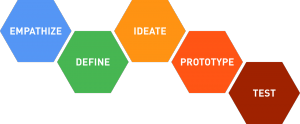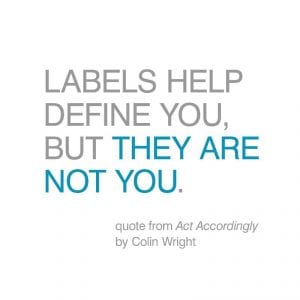Writing a blog at times can become a difficult thing. When you come up with a topic, you’re not always going to say the right thing and there are certainly people that are going to disagree with everything you say, or just have no interest. It is sometimes a risk that you take when choosing a topic- sometimes it comes off right, other times it doesn’t. The common theme here is that it can become a struggle. I’ve come to realize that if there was no struggle, what’s the sense of doing it? How will I learn? We learn from our mistakes, right?
Struggle is commonplace in education. We all experience it, so we must all have some interest in the topic. We see it in our classrooms quite a bit, with students and sometimes with ourselves. You might just see it in the everyday world as well. Just the other day I witnessed what I feel is a common form of struggle. I’m not saying that this happens all the time, but I have seen it on more than one occasion. And, I am quite sure that I’m not the only person that has experienced it, but it made me think about how we sometimes make things easy on our students and they don’t get the learning. Take a look and see if this sounds familiar to you.
I was placing my order at a fast-food restaurant when this transaction/conversation took place.
Cashier: “Your total is $8.37.” (I was hungry, alright?)
Me: Hands cashier a ten dollar bill.
Cashier: Punches ten dollar payment into the register.
Me: “Oh, wait, here’s the 37 cents.”
Cashier: “Um, hold on a second. I need to void this out and ring it up again.”
This just left me cringing inside. I wondered why this conversation was even happening. Why do people struggle with something that seems so practical? Has this employee ever been pushed to think outside the box? Have they only experienced surface level thinking? Were they part of an educational system that never allowed deeper thinking? Have they ever been challenged? Will they learn from this struggle or will the same thing happen with later ?
Challenging students to dig deeper can sometimes be difficult because we want our students to be successful. If the challenge becomes too difficult do they give up and question future challenges? We’re taught to learn from our mistakes, but not everyone enjoys taking this direction. We sometimes reach the barrier of, if we challenge too much, do our students just give up? It’s a tight line that we walk.
I recently stumbled across a book titled Faster Isn’t Smarter by Cathy L. Seeley that touches on this subject. The book discusses the recent trend in education, specifically in the United States, with messages about math, teaching, and learning in the 21st century. Seeley talks a great deal about how, “from an outsider’s perspective, American teachers are considered soft, that they don’t challenge their students to think critically.”
In Faster Isn’t Smarter, Seeley references a study completed by Jim Stigler and Jim Hiebert in The Teaching Gap where they mention that “when American teachers choose mathematically complex tasks, their teaching approach tended to remove the complexity and reduce the difficulty of the tasks.” It appears that maybe we’re “spoon feeding” our students so that the struggle diminishes. There comes a time when we need to stop showing our students how to solve a problem and allow them the opportunity to figure it out on their own. Maybe we just need to offer more challenges.
When we assign a task, how many times have we told a student how to do the problem or task? Are we teaching them that they will always need guidance whenever they are posed a problem? Are we babying them? There comes a point where our students need to start learning things on their own. Students need to struggle sometimes to figure things out and they need to learn from their mistakes. However, if we continue to do things for them they will be those same cashiers that void out their transactions.
Seeley explains this concept as “constructive struggling- the value of challenging our students.” When we pose problems or tasks to our students, we need to allow a struggle- we even need to accept failure. When teachers continue to supply information, and even do the tasks for their students, they seem to be doing more harm than good.
This reminds me of the eight Standards for Mathematical Practice that we were introduced to several years back. The initial standard (MP1) “Make sense of problems and persevere in solving them” really stands out when you reference “constructive struggling”. When we’re supplying students with the necessary formulas or a step-by-step method, are they really learning anything? They might be getting their answer correct because we guided them, BUT are they really absorbing their learning?
So you ask, what exactly is “Constructive struggling”? Seeley identifies Constructive Struggling as…….
-when students are given engaging yet challenging problems.
-when demanding, possibly time-consuming problems will likely provide more learning value than several shorter but more obvious problems.
-when presenting students with problems that call for more than a superficial application of rote procedure.
-when guiding questions are presented in a way that stops short of telling students everything they need to know to solve a problem.
“As students engage in the constructive struggling needed for some of these problems, they learn through perseverance, in-depth analysis, and critical thinking are valued in mathematics just as much as quick recall, direct skill application, and instant intuition”, Seeley continues. Mathematics is hard, as are other content areas. Sometimes students need to struggle to figure things out, especially when things are complex. Maybe the next time any of us are in that fast-food line we should take a minute and explain to that cashier how to problem solve.
Sources:
Seeley, Cathy L., Faster Isn’t Smarter, Math Solutions, Sausalito, CA 2009
http://www.corestandards.org/Math/Practice/ Standards for Mathematical Practice













